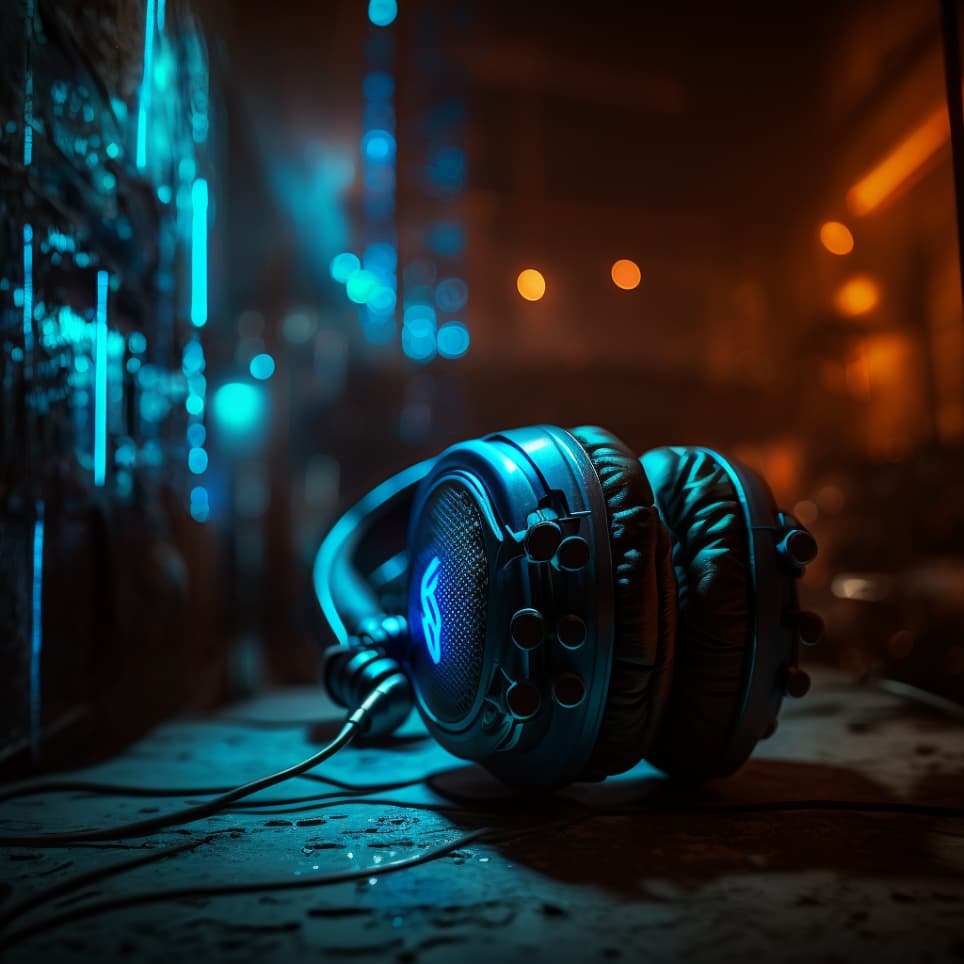
Dolby Atmos Podcast fails for immersive audio books
Content
Dolby Atmos Podcast wants to be a thing. I say: Please don’t mix immersive podcasts or audiobooks with this format – here is why you will regret:
The recent guide by The New York Times on mixing spatial audio for podcasts has generated some concern in the audio production community. I could quite some positive responses for calling out Dolby Atmos on my LinkedIn Post.
While the guide provides a detailed overview of spatial audio and its benefits for podcasts, it relies heavily on Dolby.io as the go-to tool for spatial audio production.
Before the New York time, I already wrote a detailed intro about how spatial audio for immersive podcasts can make sense. Currently, it is rather used as a marketing term to sound more “immersive”. But read here about the true potential.
In this blog post, we explore why Dolby Atmos may not be the best choice for spatial audio in podcasts and offer some alternative solutions that may be better suited for podcast storytelling. Also since the recent developments of Audible supporting Dolby Atmos as a podcast format, let’s have a deep-dive.

The Voice-Over dilemma
Dolby Atmos is a powerful tool for spatial audio production in films and video games. However, its suitability for podcast production is questionable. One major issue is the missing distinction between diegetic and non-diegetic audio in podcasts when combined with head-tracking.
A feature that every Apple headphone allows nowadays.
Why are non-diegetic elements crucial?
Diegetic audio refers to sounds that exist within the story world of the podcast, such as sound effects and dialogue. Non-diegetic audio, on the other hand, refers to sounds that exist outside the story world, such as narration and music.
In podcasts, it is essential to be able to differentiate between these two types of audio, as they serve different narrative purposes. Dolby Atmos podcasts, however, cannot effectively differentiate between diegetic and non-diegetic audio, which can result in a confusing and disjointed listening experience.
Dolby Atmos mixes are actually faulty
The error can already be heard in the famous German audiobook called “Die Drei ???”. The narrator is suddenly part of the scene with the actors. This doesn’t make any sense. But: Dolby’s production suite is simply not capable of doing better.
The reason is that Dolby Atmos’ preference is making everything 3D audio – even a voice-over. means that the narrator becomes part of the audio scene, which is not desirable in podcasting. This is confusing for the listener.
I could already prove this in a study I made on that subject matter in the context of 360 Video Heatmaps.
Dolby Atmos VR did better
Dolby Atmos offers the possibility of in-head localization by switching the binaural render mode to “Off”. However, the Dolby engine is currently not compatible with head-tracking. Pretty odd for a spatial audio rendering platform.
Through Apple Music, there is the possibility to play Dolby Atmos music (and thus podcasts) with or without headtracking. In this case, Apple Spatial Audio uses multichannel Dolby Atmos podcast signals and applies directional audio filters to adjust the frequencies that each ear hears, allowing for headtracking.
However, this results in everything being externalized, making in-head localization no longer possible. This is because Apple’s spatial audio does not use Dolby’s binaural metadata. Let’s wait and see how this will turn out for Audible.
A colleague of mine found the right words for this:
“I fully agree that Dolby should bring back the ability to headlock sources from the VR days. That way the content creators could decide what they think makes the most sense. (while you’re at it Dolby, please also bring back automatable binaural render modes).”
There is longterm hope
As an official representative, I’m teaching immersive audio for the new jobprofile “creator for immersive media”. Organized Germany’s VET (vocational education and training). So the next generation of audio and sound design enthusiasts will already know about this issue. 😉

3D Audio that’s not 3D
As you know, 3D audio and sound design is supposed to be coming from all around you, right? So you have left and right (like stereo), back and front (like with surround sound) and now up and down (making it 3D immersive audio).
But guess what, Dolby is actually not capable of sounds coming from “below”. All it can do on a height level is: up. Therefore this immersive audio software architecture is basically a half-sphere. To be honest I’m not too mad about this Dolby Atmos flaw in the context of music.
It even is in the FAQ, but read careful
If you read the following text, it sounds great.
“Dolby Atmos provides a true spatial sound experience as the creator intended-where sounds are individually placed and moved in three-dimensional space, giving you the feeling of sound from all around you, even above and behind you”.
But wait a second: if you read closely there is the failure – it’s “even above” but not below you. 😉
Immersive audio from below becomes a problem
With films, I get, that most of the time, loudspeakers can’t even be placed below the listener. At least they can hang from the ceiling. Giving you enveloping sound. But calling it the best 3d spatial audio solution is odd.
Because how about footsteps? Wouldn’t you want to hear them below you? Or think of sitting on a motorbike. The audio engineer plays the sound on ear level – that’s he or she can do. Pretty odd, right?

Spatial and interactive audio
In addition to the limitations of Dolby Atmos podcast mixing, there is also the issue of interactivity. Object-based audio, which is only supported by Dolby Atmos in the sense of spatial audio, offers much more flexibility in terms of interactive possibilities.
This is achieved through metadata, which is a separate track containing information about the volume ratios, and positions of spatial and interactive audio objects with their parameters.
Producers have the ability to set parameters for interaction during playback, such as adjusting volume ratios or selecting different presets for different languages or for hearing-impaired listeners.
However, with object-based audio, producers could potentially explore all kinds of parameters for playback interaction, raising interesting questions about the future of immersive storytelling and audiobooks.
Spoiler alert: A format called MPEG-H can do exactly that. Already been adopted by broadcast services in Brazil and Korea. I wonder who is next with this rapidly evolving technology? Read more on mehr erfahren.
It’s unfortunate that Dolby doesn’t offer this level of flexibility and instead promotes a one-size-fits-all approach. It feels more in more like the effort to make a Dolby Atmos Podcast happen is in vain. But don’t worry I’ll have a solution for you.

Immersive Audio is not a technology
Additionally, it’s worth noting that the term “immersive audio” has become somewhat of a buzzword in the industry. While it sounds impressive, it doesn’t necessarily describe any specific technology or technique.
Beware of immersive audio podcast marketing
Just because a podcast or radio drama is now advertised as “3D audio” or “Dolby Atmos,” it doesn’t necessarily mean that the listening experience is any better. In fact, some would argue that relying too heavily on these technologies can actually distract from the quality of the content itself.
Ultimately, the true value of any audio production lies in the creativity and skill of the producers and engineers, not in the latest buzzword or technology trend. It’s not a problem of immersive audio podcast caused by Dolby Atmos. But you know their marketing in regards to Dolby Atmos music which sounds worse than you’d hope sometimes.
False promises with spatial audio solutions
Everything is so simply with Dolby Atmos podcast. You just take the production suite, place your sound and BOOM: immersive audio. Well as you can guess, that’s not how it works.
One issue with many podcasts that use immersive audio technology, such as 3D Audio or Dolby Atmos, is that they often sound not quite right. This is usually due to the workflow used during recording in the studio.
While the actors may deliver great performances, the resulting audio doesn’t quite fit the scene. It feels like the audio was recorded in the studio and then 3D audio effects and virtual spatializers were added later, along with a bit of reverb to create the illusion of space.
This approach can come across as disingenuous as if the technology was added just to claim that it’s an immersive audio production. Even the best performances can’t fully compensate for the lack of authenticity.
As a professional producer, I’m highly attuned to this issue and would love to hear others’ perspectives on it. Feel free the compare with the work in my portfolio.

No technology is futureproofed
It’s as simple as that – still Dolby Atmos likes to make that promise. The immersive audio podcast is a rapidly evolving industry. Dolby is making a good job of making a name for itself. As mentioned for films it’s legit, for music technology I’m not yet convinced, a Dolby atmos podcast? Please don’t!
There are so many immersive spatial audio technologies existing and coming up. There is just no way a format – that originated from traditional audio engineering in films – can be too relevant in the next few years if not updated.
I’d love the hear practical insights from Audible, to why they decided on an inferior format. If they did like 5-minutes of research and publishing activities the produced audio and sound design wouldn’t have been done in vain. Oh well who am I to judge, here are some better options that I already made countless mixes with:
Alternative Solutions for Spatial Audio in Podcasts
Although it seems like it, I don’t want to talk to bad about Dolby. They are doing a good job in making 3d audio accessible. But there should be more discussion, hence this post. Several alternative solutions exist that may be better suited for spatial audio production in podcasts. These include:
- Ambisonics – Ambisonics is a popular format for spatial audio production that provides native support for head-locked mono. This means that the sound remains in the same position in space, regardless of the listener’s head movements.
- Gaudio Lab Works – Gaudio Lab Works is an advanced spatial audio toolkit that offers ambisonics, head-locked, and object-based audio processing. This makes it a versatile tool for creating immersive and interactive audio experiences.
- Fraunhofer IIS MPEG-H – Fraunhofer IIS MPEG-H is a full 3D audio support tool that allows for personalized metadata. This allows for more accurate sound reproduction and a more immersive listening experience.
- atmoky WebSDK – atmoky WebSDK is an object-based and head-locked audio bed solution that offers a scalable and flexible solution for spatial audio production in podcasts.
Each of them has its strengths and weaknesses for immersive audio podcasts. I can help you with the right choice.
Benefits of Using Alternative Solutions
By using alternative solutions such as Ambisonics, Gaudio Lab Works, Fraunhofer IIS MPEG-H, and atmoky WebSDK, podcast producers can enjoy a range of benefits.
These include more accurate differentiation between diegetic and non-diegetic audio, better suitability for podcast storytelling, and more immersive and interactive audio experiences.

Immersive Podcast Conclusion
… or Podcats, get it? Anyways, in conclusion, while Dolby Atmos is a powerful tool for spatial audio production in films and video games, its suitability for podcast production is questionable.
The distinction between diegetic and non-diegetic audio is essential in podcast storytelling, and Dolby Atmos cannot effectively differentiate between the two.
If you want to know how you can create interactive soundscapes with immersive audio software that is more than just marketing. Contact me and let the real potential of immersive audio shine.
Get in touch